Industrial cleaning operations play a critical role in maintaining safe, efficient, and compliant workplaces. However, these environments often involve hazardous materials, heavy machinery, and complex processes that pose significant risks to workers. Ensuring safety in such high-stakes scenarios requires more than basic precautions—it demands comprehensive, standards-driven training that addresses the unique challenges of industrial cleaning. OSHA training serves as the cornerstone of this effort.
Through detailed instruction and practical applications, OSHA training equips employees to identify risks, adhere to established protocols, and respond efficiently to emergencies. This not only ensures worker safety but also streamlines operations by reducing incidents and disruptions. Let’s explore how OSHA training ensures safety and drives success in industrial cleaning operations.
Understanding OSHA Training and Its Relevance
Before delving into its impact, it’s important to understand what OSHA training entails and why it is indispensable for industrial cleaning operations.

What Is OSHA Training?
OSHA training refers to educational programs developed by the Occupational Safety and Health Administration (OSHA) to promote workplace safety and health. These programs are tailored to specific industries and cover topics such as hazard recognition, equipment handling, and emergency response. For industrial cleaning operations, OSHA training ensures workers are well-prepared to navigate hazardous environments safely.
Why Is OSHA Training Critical for Industrial Cleaning Operations?
Industrial cleaning often involves exposure to chemicals, confined spaces, and high-risk activities. Without proper training, workers are more vulnerable to accidents, injuries, and long-term health issues. OSHA training addresses these challenges with a multi-faceted approach:
- Workers are provided with comprehensive guidelines on handling hazardous materials, including detailed instructions on their safe storage, handling, and disposal to prevent contamination and exposure.
- Training emphasizes proper operation of complex equipment, ensuring employees are skilled and confident in performing tasks without compromising safety.
- A key focus is placed on personal protective equipment (PPE), teaching workers how to select, wear, and maintain appropriate gear tailored to specific tasks, while understanding its limitations.
- Emergency preparedness is thoroughly covered, with protocols for evacuation, containment, and communication during critical situations, enabling workers to act decisively and effectively to minimize risks.
By prioritizing safety through this comprehensive training, businesses can significantly reduce workplace incidents and foster a culture of accountability and preparedness.
The Impact of OSHA Training on Industrial Cleaning Operations
Transitioning from the basics of OSHA training, it’s essential to examine its direct benefits in the context of industrial cleaning operations. These advantages extend beyond compliance, driving long-term improvements in safety and productivity.
Enhancing Workplace Safety
Workplace safety is the cornerstone of any successful operation, and OSHA training is designed to minimize risks. OSHA-trained workers possess the skills to identify hazards early and implement proactive measures, significantly reducing the likelihood of accidents and fostering a safer work environment. This reduces the likelihood of accidents and ensures a safer work environment for everyone involved.
Ensuring Regulatory Compliance
Compliance with OSHA standards isn’t optional—it’s a legal requirement. Industrial cleaning operations must adhere to specific safety protocols to avoid fines, penalties, and reputational damage. OSHA training equips employees with the knowledge to meet these standards consistently, ensuring that businesses remain compliant and protected.

Boosting Operational Efficiency
A well-trained workforce operates more efficiently. OSHA training not only teaches workers how to perform their tasks safely but also emphasizes best practices for productivity. When employees understand the proper use of equipment and follow streamlined processes, businesses benefit from fewer disruptions and improved outcomes.
Key Elements of OSHA Training for Industrial Cleaning
While OSHA training covers a broad range of topics, certain areas are particularly relevant to industrial cleaning operations. Let’s take a closer look at these key elements.
Hazard Communication
Effective hazard communication is essential in environments where workers are exposed to chemicals and other dangerous substances. OSHA training ensures that employees have a clear understanding of Safety Data Sheets (SDS) and the standardized labeling systems used to communicate chemical hazards. Workers are trained to recognize specific risks associated with various substances and to adhere to strict handling protocols that prioritize safety.
Confined Space Entry
Industrial cleaning operations often involve work in confined spaces such as tanks, silos, and storage vessels. These areas present unique risks, including limited oxygen and toxic atmospheres. OSHA training provides workers with detailed guidelines for assessing and preparing confined spaces, ensuring that all potential risks are identified and mitigated before work begins. This preparation includes monitoring air quality, securing proper ventilation, and establishing safety measures.
Personal Protective Equipment (PPE)
The correct use of PPE is critical for worker safety. OSHA training ensures that employees are equipped to select the appropriate personal protective equipment (PPE) for specific tasks, taking into account the unique hazards associated with their work. It provides clear instruction on how to properly wear and maintain PPE to ensure its effectiveness over time, including regular inspections and timely replacements.
Emergency Preparedness
Emergencies can arise at any time in industrial cleaning operations. OSHA training prepares workers to identify potential emergency scenarios by teaching them to recognize warning signs and understand the dynamics of hazardous situations. Employees learn to follow established evacuation and response protocols meticulously, ensuring that they can act decisively and reduce risks to themselves and others.
Financial and Operational Benefits of OSHA Training
Investing in OSHA training offers significant advantages that extend far beyond worker safety. Comprehensive OSHA training enables businesses to minimize workplace injuries and avoid the costly operational downtime that often accompanies such incidents. This proactive approach not only reduces financial losses from accidents but also demonstrates a strong commitment to maintaining a safe work environment, which can lead to lower insurance premiums.

Partnering with Environmental Remedies for OSHA-Compliant Solutions
Navigating the complexities of industrial cleaning operations demands more than just technical knowledge—it requires an unwavering dedication to safety and efficiency. At Environmental Remedies, we understand the challenges your business faces and the crucial role OSHA training plays in creating a safe and productive workplace.
Our team seamlessly integrates OSHA-compliant practices into every aspect of our industrial cleaning services. With a focus on advanced techniques and strict adherence to safety standards, we work to minimize risks, ensure regulatory compliance, and enhance operational performance.
Let us help you achieve a safer, more efficient workplace. Contact Environmental Remedies today to explore how our expertise in industrial cleaning operations can drive success for your business.






